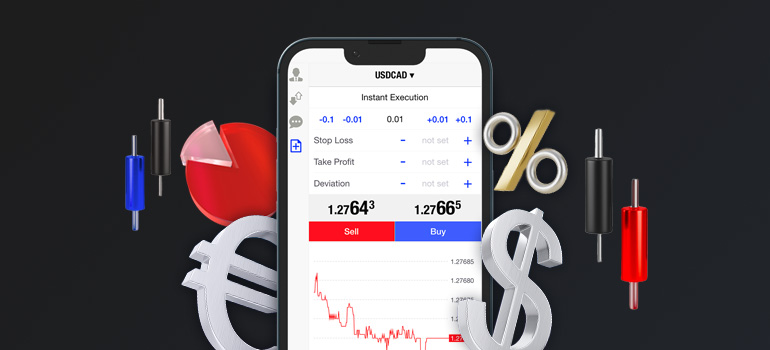The forex market is the global financial market for exchanging foreign currencies and the most widely traded market in the world with a daily trading volume of $6.6 trillion. Participants in the forex market include banks, commercial companies, central banks, investment management firms, hedge funds, retail forex brokers and investors.
Read on to learn all about the forex market and how forex trading works.
Forex trading hours
The forex market is a 24-hour market which is open five days a week from Monday to Friday. The forex market is run by a global network of banks which are spread across four major forex trading centres in different time zones: London, New York, Sydney and Tokyo.
Forex trading begins with the opening of the market in Australia, followed by Asia, and then Europe, followed by the US market until the markets close on the weekend.
During the summer, trading begins on Sunday at 9:00pm GMT and ends at 9:00pm GMT on Friday. In the winter, trading starts on Sunday at 10:00pm and ends at 10:00pm on Friday. This means that currencies are traded at all times, day or night. Unlike in other markets, in the forex market there are always buyers and sellers.
Forex is traded in currency pairs
Forex is always traded in currency pairs as forex trading involves simultaneously buying one currency and selling another. There are lots of currencies you can trade, but new forex traders are most likely to start trading with the major currencies, also known as majors. The US dollar (USD) is involved in most forex trading.
The euro (EUR) is the second most popular currency. Other majors include the Japanese yen (JPY), the British pound (GBP), the Australian dollar (AUD), the Canadian dollar (CAD), the Swiss franc (CHF) and the New Zealand dollar (NZD). The most heavily traded currencies are the majors and represent some of the world’s largest economies.
The major currency pairs below make up about 75% of trading in the forex market:
- EUR/USD
- USD/JPY
- GBP/USD
- AUD/USD
- USD/CAD
- USD/CHF
- NZD/USD

Buying and selling currency pairs
Currencies are traded in pairs through a forex broker or CFD provider. Currencies are quoted relative to another currency, for example, the euro and the US dollar (EUR/USD). Trading in the forex market involves buying or selling in currency pairs. An exchange rate represents the rate at which one currency will be exchanged for another currency, and it fluctuates based on which currency is stronger at the time.
There are three categories of currency pairs which are the majors, crosses and exotics. The majors alwaysinclude the US dollar, and these pairs are the most liquid in the world. Liquidity describes the level of activity in the financial market and it is based on the number of active traders buying and selling a specific currency pair and the volume being traded. For instance, more people trade the EUR/USD currency pair and at higher volumes than the AUD/USD currency pair. This indicates that EUR/USD is more liquid than AUD/USD.
Cross-currency pairs do not include the US dollar, and those that involve any of the major currencies are also known as minors. The most actively traded cross-currency pairs are derived from the three major non-USD currencies: EUR, JPY, and GBP.
Exotic currency pairs include one major currency and one currency from an emerging market (EM). As these pairs aren’t as heavily traded as the majors or crosses, the transaction costs associated with trading these pairs are usually higher.

The interbank market
Most forex trading takes place on the interbank market. This is a global network where financial institutions trade currencies and other currency derivatives directly between themselves. The forex market does not have a physical location or a central exchange like other financial markets such as the New York Stock Exchange (NYSE) or London Stock Exchange (LSE). In fact, the forex market is spread worldwide with no central location, so trades can take place anywhere as long as you have an internet connection.
Forex trading is based on speculation
Most currency trading is based on speculation, which means that traders buy and sell based on the short-term price movements of currency pairs. In the forex markets, retail traders are speculating when they try to make a profit when one currency appreciates or depreciates against another currency.
What influences the forex market?
The price of currencies is set by the supply and demand of sellers and buyers, but there are also other macro forces in this market. Demand for specific currencies may also be influenced by interest rates, central bank policy, the rate of economic growth and the political environment of a country.
As the forex market is open 24 hours a day, five days a week, it gives traders the opportunity to react to news that might not affect the stock market until much later. As already mentioned, currency trading focuses on speculation or hedging, so it’s important for traders to be knowledgeable on the dynamics that could cause sharp spikes in currencies.
Trade forex with IronFX
Choosing the best forex broker to open a trading account is not as simple as it seems as there are so many brokers available online. If you want to trade forex with a globally recognised broker, why don’t you do some research on IronFX and try out their trading platform by opening a demo account. Follow the steps below:
- Open a demo account.
- Do your research on trading.
- Check forex education and read the latest financial news.
- Register and test your trading skills.
DISCLAIMER: This information is not considered as investment advice or an investment recommendation, but is instead a marketing communication
